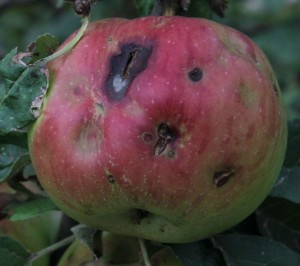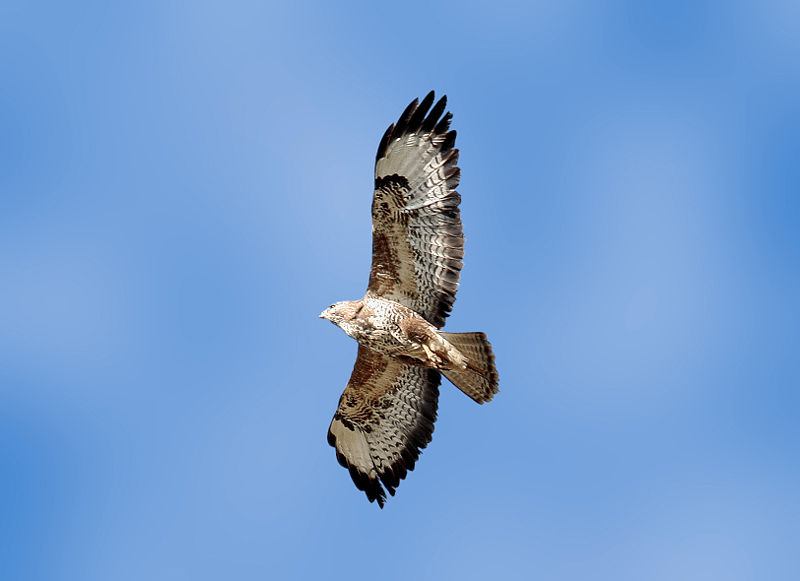
Yesterday a gamekeeper in Norfolk was found guilty of poisoning 10 Buzzards and a Sparrowhawk. It’s hardly news except that this is England’s worst single case of bird of prey poisoning. But ‘Well done!’ to Norfolk Police and to the RSPB. And District Judge Peter Veits said some interesting things too.
If this had been a school teacher doing the poisoning, or a postman, or an estate agent then it might have been news but a gamekeeper? That’s what we have come to expect and our expectations are rarely ‘disappointed’ though our disappointment in the shooting community continues to mount.
Things are rather better in the lowlands than they used to be, in general, and are better in the lowlands than the uplands (not saying much) so we shouldn’t be too downhearted, and, of course, we now do have Buzzards and Red Kites in much of lowland England which was not true a few decades ago. But it does seem as though there is an awful lot of rottenness in the shooting ‘community’.

They can talk as much as they like about a ‘few bad apples’ but those are what spoil the barrel. Shooting’s reputation is tainted again and again by this type of case. And leaping in to say ‘the tags might have failed’ every time a bird of prey disappears in suspicious circumstances just gives the impression that organisations representing shooting are desperate rather than realistic.
Imagine if birdwatching faced news stories every few weeks about scandals and illegal behaviour. What impact would that have on us all?
And these cases are going to come thick and fast with modern technology and increased public awareness. There will be more and more and more news of this type over the next few weeks, months and years. How will shooting respond? Denial?
And let us be clear, these cases are the tip of the iceberg. It’s very difficult to know the size of the iceberg – but it is clear that we only see its tip. It is really, really difficult to know that a bird of prey has been killed on an estate. Most birds of prey are not satellite- or radio-tagged, but even when they are the information does not necessarily lead to prosecutions. Any birds that are shot will have their bodies disposed of by the person who shot them. Poisoned birds don’t fly far and their bodies can be hidden or destroyed.
Take the very sad case of the murdered child Alice Gross whose body was found in the River Brent yesterday. She disappeared over a month ago in a highly populated area, her parents reported her missing and CCTV revealed her last sighting to within minutes and her last location very accurately. As the time went on it felt overwhelmingly, and agonisingly, likely that this was a search for a teenager’s body, and resources piled into the search but it took over a month for that part of the tragic story to end. Quite rightly, no missing bird of prey has anything like the resources devoted to it as does a missing child but that does mean that the chances of finding evidence of a crime are relatively tiny. Therefore, although we know that few teenagers are murdered in our towns, we know far less about the scale of murder of protected birds of prey in our countryside.
How big an iceberg of raptor persecution is there in the countryside? You will find it hard to find a shooting estate where anyone has a good word to say about most raptors. Those organisations that represent the landed gentry are those that oppose the reintroduction of native birds of prey to areas where they were extirpated. A single ‘keeper, if active against birds of prey for much of his career may be responsible for the unrecorded deaths of hundreds, maybe even thousands, of fully protected birds of prey. How far down the road from where you live would you have to go to find a ‘keeper with that attitude?
How shocking would be the story if we knew all the facts?
How embarrassed would be those who shoot if we knew all the culprits?
BASC chairman Alan Jarrett said: ‘BASC utterly condemns any persecution of birds of prey. Nothing can justify such actions. Every law-abiding person involved in game management and shooting will denounce anyone involved. In this case the law has run its course and justice has been served. Shooting is rightly proud of its excellent contribution to conservation. That record should not be tarnished by the actions of a few who believe they can flout the law.’.
Fine words, Alan, but wearing very thin aren’t they? How many times have you said the same? How many more times will you have to trot this out? Shooting is proud of its contribution to conservation is it? You know what they say – pride comes before a fall?
[registration_form]

We can get some idea of the disparity between the known and actual levels of raptor persecution from studies such as Bob McMillan’s paper in Scottish Birds (31:3 2011). Looking at vermin lists from a Perthshire shooting estate, Bob found that on just one gamekeeper’s beat over an eight year period an average of 25 birds of prey and owls were killed each year. In contrast, RSPB records of confirmed incidents of raptor persecution for the whole of Scotland over the same period averaged fewer than 14 incidents per year (and included none of this beat’s incidents).
I would like to point a finger at the landowners.
This debate seems to concentrate on the gamekeeper, and yes they do the killing, but I bet they are told to ‘get rid & I don’t want to know the details!’
Landowners know what they want, and a job on the line is the way they get it. Until fines and prison sentences apply to landowners too, the problem will remain.
Many people still doff their cap, and call their boss ‘my lord’…………
Mark W – which is why vicarious liability would be a small step forward. That, perhaps, was what the judge hinted at in his remarks.
Vicarious liability exists in Scotland but not elsewhere in the UK for wildlife crimes.
But this government, despite a 10.000+ e-petition started by Chrissie Harper (and not promoted by the RSPB despite promising that they would), ruled it out. The Minister who ruled it out was Richard Benyon, shooter, former trustee of the GWCT and grouse moor owner.
On 30 June 2011, Labour MP Angela Smith (Penistone & Stocksbridge, South Yorkshire) asked the following question: Only two weeks ago, a gamekeeper was convicted for illegally killing birds of prey in my constituency. Is it not time to think about introducing a vicarious liability offence to ensure that landowners and estate managers supervise their gamekeepers more closely and more effectively?
Richard Benyon’s response: There are very good laws in place to punish the illegal killing of any animal. If they are not being effectively enforced, they must be and we will take steps to make sure that happens. However, this is a good opportunity to applaud gamekeepers for the wonderful work they do in providing excellent biodiversity across our countryside.
Is that the excellent biodiversity that continues to freefall under people like Benyon’s watch. They live in a parallel universe.
In just the last 4 years numbers of occupied peregrine territories in the Forest of Bowland have dropped from an average of 17 pairs to just 5 this year, of which just a single pair were productive. Already we have seen two of this years tagged Bowland Harriers disappear, presumed to have been shot. How many of the un-tagged harriers are still alive I wonder? The 4 pairs of eagle owls appear to have vanished, although unconfirmed rumour suggests one pair may have been successful; doesn’t say a lot for their future on grouse moors .
I have said it countless times, what is the point of tagging raptors if the moorland estates where they go missing are not immediately identified? Keeping this important data secret only protects the estate, landowner and gamekeeper.
Naming and shaming the estate at least may prevent this kind of illegal activity being repeated. Are we going to wait until all birds of prey on England’s uplands where grouse are shot become extinct?
Huge congratulations and thanks to birdwatchers in/visiting the area who logged their Buzzard sightings in BirdTrack.
Basic counts by BirdTrackers helped to undermine a key element of the defence’s case, which asserted that Buzzard is not abundant enough in Norfolk for it to be possible to kill so many individuals in one place.
It would be great to see this contribution by ‘normal’ birdwatchers both celebrated and heralded as something we can and should ALL be doing in the fight against wildlife crime. Taking the simple step of turning a sighting into a BirdTrack record can unlock its value in ways nobody could have predicted!
Nick – very interesting. Thank you. I would never have thought of that.
Credit also to the legendary Richard Porter who gave evidence at court. Richard’s soaring buzzard survey published in the in the Norfolk Bird and Mammal Report for 2012, the year before Lambert poisoned his buzzards, counted a total of 233 buzzards, which included 79 pairs, in the area of north Norfolk which included the Stody estate.
Bushrike – hurrah for Richard! One of my many heroes as here https://markavery.info/2013/08/19/bird-fair-2013-day-3/
Presumably the Stody Estate is the recipient of the Single Farm Payment, a subsidy for landowners paid for by the British taxpayer with very few strings attached. One those few strings is that recipients of the Single Farm Payment abides by the law protecting wild birds – Statutory Management Requirement 1. If a few of your blog readers e-mail the Rural Payments Agency at this address csc@rpa.gsi.gov.uk and ask them to investigate a potential cross compliance breach by the Stody Estate, Estate Office, Stody, Melton Constable, Norfolk NR24 2ER relating to SMR1 and send them the following link http://www.bbc.co.uk/news/uk-england-norfolk-29454939 then they might investigate and hopefully impose a significant fine on the estate’s Single Farm Payment. Remember it is our money that is being handed out to these estates and we should be able to hold them to account if they abuse our kind largesse.
Genuinely, good luck with trying to get the RPA to investigate any breach of anything by a landowner. Been there tried it and effectively told that they can’t investiagate matters raised by the ‘public’.
But, having said that it should not stop anyone trying. Hopefully critical mass will encourage a more robust procedure. If they refuse then MPs should be encouraged to take up the matter. It is as Rob rightly reminds us, our tax revenue and we need it to be delivering public benefit.
Does there exist a register or directory of landowners (in Suffolk/Norfolk) that allow shooting on their land?
It might be interesting for local birders to take an amble along such public access that exists and take a look to see what’s going on.
Mark – I doubt it. Shooting is pretty much unregulated in this country – once you’ve got a gun licence. Very little reporting of activity, bags etc.
All birders can help by keeping their eyes open and reporting anything suspicious to the police. And put your records into Birdtrack as Nick Moran suggests here
I have emailed the rural payments agency as suggested. It will be interesting to see if I get a reply.
Dave
There is a very quick and simple solution to all this illegal killing, firstly make the landowner 100% liable, secondly have sensible sentencing and lastly a fine of £10,000 for each BOP killed in this cruel and unnecessary way.
Bah Humbug to BASC chairman Alan Jarrett if he thinks the shooting fraternity contribute in any way to conservation he is just as delusional as his members.